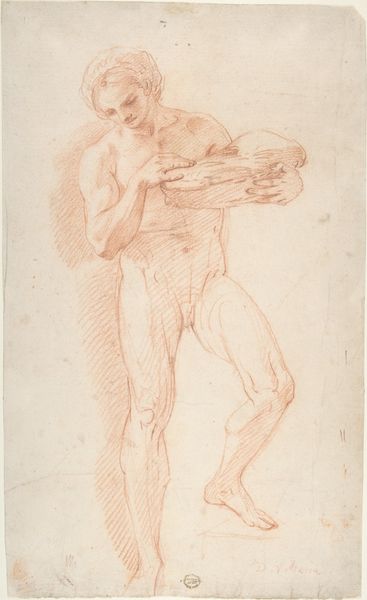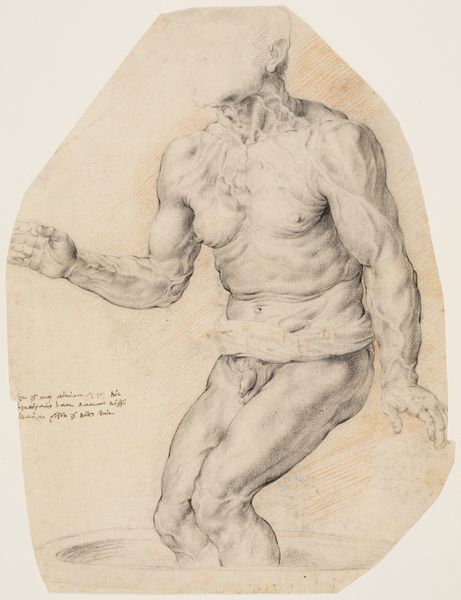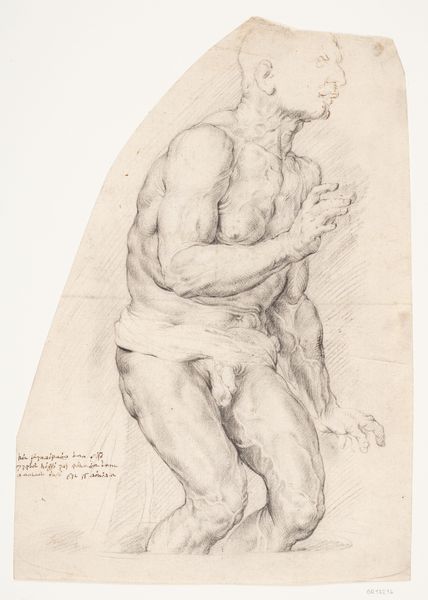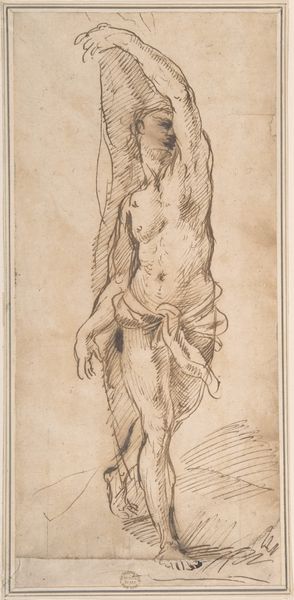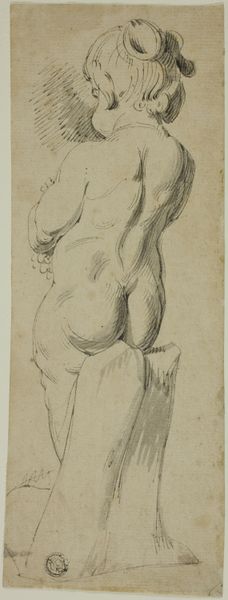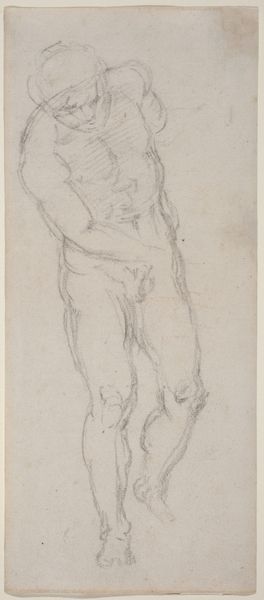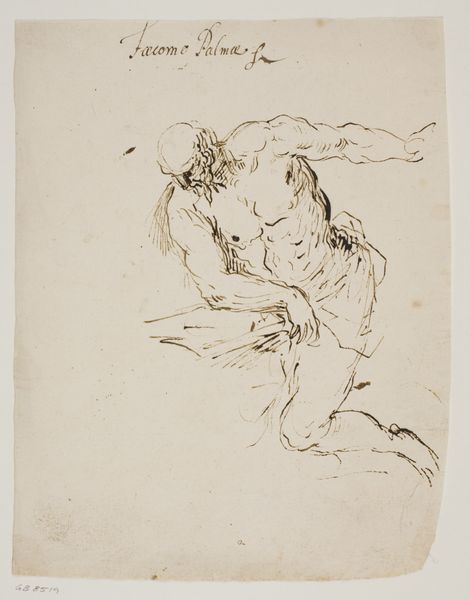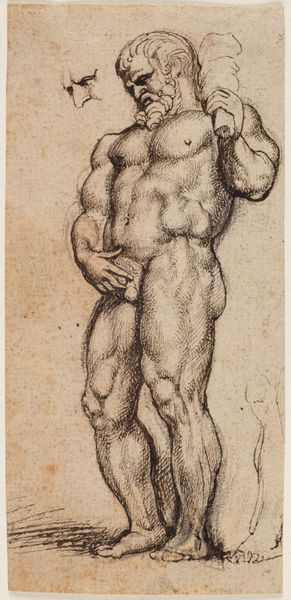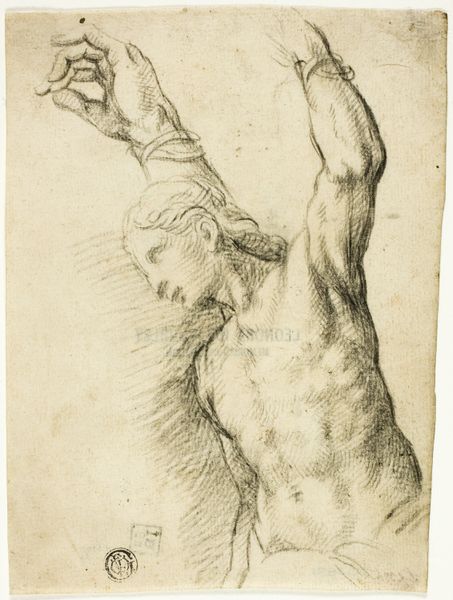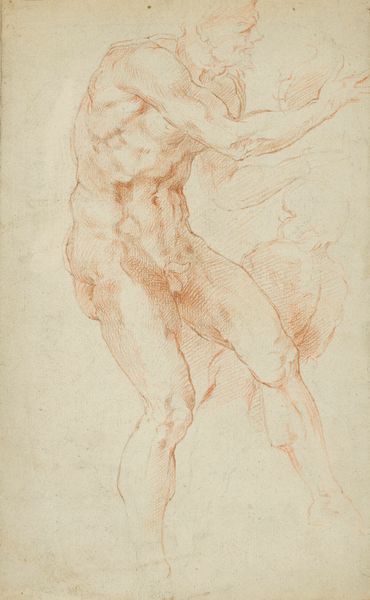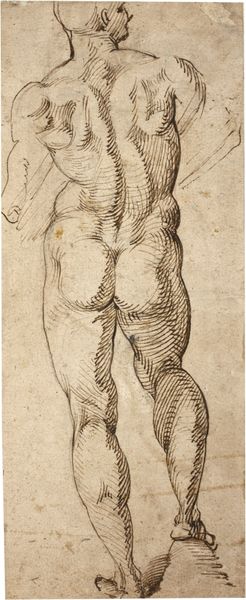
Anatomical Study (écorché). Front view of standing flayed man, his left arm raised 1628 - 1630
0:00
0:00
drawing
#
drawing
#
figuration
#
nude
Dimensions: 410 mm (height) x 288 mm (width) (bladmaal)
Editor: So this drawing, titled "Anatomical Study (\u00e9corch\u00e9). Front view of standing flayed man, his left arm raised" by Willem Panneels, made sometime between 1628 and 1630, presents a dissected male figure. It's unsettling but the draftsmanship is superb. What strikes you first when you look at it? Curator: The articulation of form, achieved through rigorous, almost obsessive, mark-making. Observe how the artist uses hatching and cross-hatching, modulating the density of the lines to describe the complex topography of muscle and sinew. Consider how light falls and is subsequently modeled across the exposed anatomy. Editor: It's definitely an intense way to look at the body. I suppose it's very clinical. What's the impact of its being a drawing versus, say, a sculpture? Curator: Precisely. As a drawing, it offers us insight into the artist's process of observation and construction. Note how the figure lacks a clearly defined background, throwing into high relief the precise anatomical elements. In a three-dimensional representation like sculpture, certain linear qualities, the sheer impact of the pen across paper, would be impossible to replicate with equal dynamism. It's through the medium that this work attains its significance as a study of artistic skill. Editor: So, it’s the meticulous detail and rendering that matter most here, not necessarily the subject's implied meaning or function? Curator: In large part, yes. We see the body not just as an object but as an elaborate construction. This focus pulls back the curtain of humanism that we might traditionally impose and invites viewers to focus more on art-making techniques than inherent anatomical purposes. What did you notice as you examined its graphic characteristics? Editor: Well, I initially saw just a disturbing image, but I better appreciate now how the textures and forms interact thanks to the way he handled line and shade. I am amazed how line quality generates planes. Curator: Indeed! Consider how that principle is replicated across artistic endeavors. The graphic language remains ever-pertinent, ever vibrant.
Comments
No comments
Be the first to comment and join the conversation on the ultimate creative platform.
